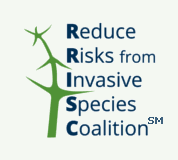How Are Invasive Species Harmful?
Ecological impact
- Invasive species have singlehandedly caused 20% of species extinctions across the planet since the year 1600
- Invasive species have contributed significantly to half of all species extinctions since the year 1600
- An estimated 42% of the species currently on the federal Endangered Species Act list are imperiled at least in part because of some harm caused by invasive species
- Nearly 40 species that are currently candidates for listing under the federal Endangered Species Act are at risk because of harm caused by invasive species
- Invasive species can dramatically re-shape ecosystems and fundamentally alter predator-prey relationships
- Dutch elm disease and chestnut blight have already re-shaped North American forest ecosystems
- The Asian longhorned beetle, emerald ash borer, hemlock wood adelgid, and sudden oak death are among the invasive species that threaten the next wave of forest ecosystem trauma in North America
- Invasive species can literally take over an ecosystem, becoming the vast bulk of the biomass in the ecosystem.
- More than 90% of the biomass in San Francisco Bay is of alien origin.
- Zebra and quagga mussels literally smother native mussel communities
- Kudzu forms a green mat over the landscape, choking everything in its path
Economic impact
- According to Molly Michelson of the California Academy of Sciences, invasive species annually cause $1.4 trillion in damage to the global economy.
- According to Professor David Pimentel of Cornell University, invasive species cause damage of $127 billion annually to the American economy, including:
- Agricultural crop weeds — $21 billion
- Crop plant pathogens — $18 billion
- Livestock diseases — $9 billion
- Pasture weeds — $6 billion
- Forest pests — $4 billion
- Landscaping pests — $3 billion
- Other annual estimates for individual invasive species include
- Zebra mussels — $2 billion, especially in the Great Lakes states
- Pigeons — $1 billion
- Asian clams — $1 billion
- Formosan termites — $1 billion, especially in Louisiana
- Fire ants — $1 billion, especially in Texas
- Feral pigs — $1 billion
- There are dozens of other invasive species that each annually cost the American economy $10 million to $100 million.
- Invasive plants such as salt cedar, Russian olive, and giant reed drain precious groundwater and surface water supplies in drought-prone Western states, consuming thousands of acre-feet of water worth millions of dollars and threatening the economy of the West
Human health impact
- West Nile virus is predominantly a disease of birds transmitted by infected mosquitos, but it has killed 1,500 Americans and sickened 37,000 through 2012
- Giant African land snails are a known carrier of meningitis
- Fire ants have been known to hospitalize bitten human victims
- Feral swine carry 37 parasites and 30 disease organisms that affect humans
- People have drowned after becoming entangled in dense mats of invasive aquatic weeds
- Invasive plants re-shape range ecosystems, making them more susceptible to wildland fires that each year takes lives, destroy property, and cost hundreds of millions of dollars to control
Recreation impact
- Invasive terrestrial weeds degrade elk, moose, and deer habitat, and reduce opportunities for hunters
- Invasive aquatic weeds, birds, and mammals damage waterfowl habitat and degrade the boating, swimming, and fishing experience in our lakes, rivers, and coastal areas
- Asian carp threaten the multi-billion dollar Great Lakes recreational and commercial fishing industry, and the boating industry that depends on them.





